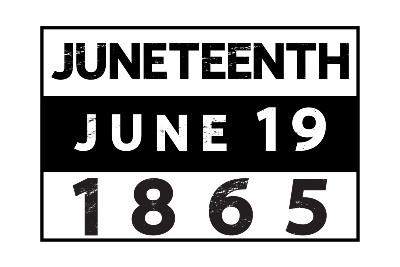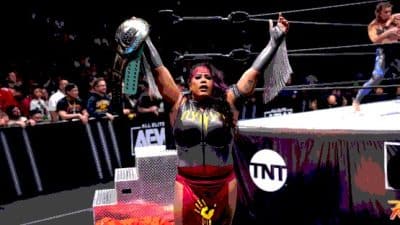
Rich red velvet cake, luscious strawberry pie, and sweet red punch may be the delectable traditions of contemporary Juneteenth celebrations, but the Virginia Tech College of Liberal Arts and Human Sciences has its own remembrance honoring the historic struggle for freedom and the culmination of the end of slavery.
To commemorate and uplift the culture and achievements of the Black and minority populations, continue the fight for social justice, and champion inclusion and diversity, the college founded the Juneteenth Scholars Program last year.
Seven early-career faculty members from the departments of History, Political Science, Religion and Culture, and Sociology made up the first cohort of the Juneteenth Scholars. With funding from the college and undergraduate research support, they delved into a range of topics. Their work covered a broad swath of research that looks at historical, political, and modern-day marginalized populations.
“Our scholars’ research makes connections between history and today’s critical challenges,” said Laura Belmonte, dean of the College of Liberal Arts and Human Sciences. “They are looking, for example, at a range of populations, from Black cowboys during the colonial period of Mexican history, to laborers in 19th-century California, to marginalized populations at modern-day universities. In these ways, the Juneteenth tradition is inspiring new work in social justice.”
To mark the June 19 holiday, here is a recap of the 2020 Juneteenth Scholars’ research:
Brandy Faulkner
The deaths of George Floyd and Breonna Taylor and similar racial atrocities became a rallying point for many in 2020. Many Black university students became inspired to work toward changes in diversity, equity, and inclusion at predominantly white universities.
“We saw many students and student organizations put out lists of demands to university administrators, but I wanted to see the results,” said Brandy Faulkner, a collegiate assistant professor of political science and the Gloria D. Smith Professor of Black Studies. “How did administrators respond? Were the students effective? Often underrepresented students feel isolated. Did they connect with the broader community? Was it supportive? Did the students get the help and the resources they needed to be successful?”
These were the questions Faulkner researched. After studying lists of student demands, she found commonalities across the universities, including Virginia Tech, Penn State, and the University of Missouri.
“Students want better recruitment efforts,” she said. “They want to know what universities are doing to recruit underrepresented students. They want more faculty who look like them. The students perceive that by not having access to Black faculty, for example, something is missing.”
She found that these efforts of Black student-led social movements met with mixed results.
“There was significant variation in success rates,” she said. “Some gained promises. Administrators said, ‘OK, we hear you and we’re going to do better. We promise.’ And then nothing happened. Why? In other instances, those students who kept pushing achieved the changes they sought.”
Andrea Baldwin
Andrea Baldwin’s Juneteenth Scholars project also involved studying predominantly white universities and the impact of their diversity and inclusion polices on those with minoritized and marginalized identities. In her research, she examined the colonial history of the university, including a decade of orientation policies and practices, particularly those geared toward inclusion and diversity. She found that these policies often portray how the marginalized and minoritized feel in and about the university in way that is different from those who are white. She said that although universities, such as Virginia Tech, acknowledge their controversial histories and take actions, such as listing preferred pronouns on student name badges and denouncing land and labor exploitation, these aren’t enough.
“This project goes beyond simply examining how Black and other folks of color, women, and queer folx navigate the institution, but also the feelings that this constant navigation produces,” added the assistant professor of sociology. “It’s largely about how minoritized and marginalized students and faculty, as well staff, feel within the university. When they come on campus, how do they feel within the structures and among the people they encounter? Just the space itself produces an affectivity, a way that they feel that differs greatly from that of white, cisgender, heterosexual majority people with those white identities. And I argue that basically, for those of us who are marginalized and minoritized to succeed at the institution, we need to take those feelings into consideration. And I posit we can’t keep doing business as usual.”
Today, institutions such as Virginia Tech, Baldwin said, are in a nebulous place as they navigate the establishment of inclusion and diversity policies and programs, while trying not to create dissention within its majority. There is still much work to be done, she added, and she cautions universities to be careful not to continue to alienate their minoritized and marginalized populations.
“They need to ask how it feels to have to deal with this all the time, especially as universities’ rhetoric is around inclusion and diversity,” she said. “And all these things that are supposed to make you feel as though you belong, but at every turn, you feel as though you don’t belong.”
Desirée Poets
Veering away from the world of higher education, Desirée Poets, an assistant professor of political science, focused on social justice and collective memory issues far south of the U.S. border. During the COVID-19 pandemic, when disinformation became a widespread issue, community museums and community-run newspapers in Rio de Janeiro provided needed support, unrivaled by the government, to the people in working-class and informal neighborhoods known as favelas.
“Community museums, once a space for collective memory, reorganized their resources and their capacity to support the communities during the pandemic,” she said. “They became important in community communications, starting campaigns that were also sometimes artistic on how to raise awareness on pandemic-related concerns, especially toward working-class communities. And the larger museums also became distribution centers for hygiene kits, food, and basic needs for the residents.”
But the community museums were not alone in this endeavor. Community-run newspapers also played a major role in disseminating crucial information to the public, in ways that were easily discernable to their audiences. With a team affiliated with the Institute for Policy and Governance’s Community Change Collaborative, Poets investigated how two community newspapers, Fala Roça in Rocinha and Maré Online in the Maré favela complex, supported their respective communities during the pandemic.
“We know residents run community newspapers, much like community museums,” Poets said. “The two newspapers have different institutional backgrounds, but even though they’re all centering on the residents, and telling the stories of people, they do so in very distinct ways. The strategies of communication are really specific. Some publish short and concise articles for nonreaders, and others offer longer opinion-based stories that help unpack scientific terminology related to COVID-19.”
According to Poets, Brazil differs from the United States, where publications by nonprofits and community-led organizations often fall under a neo-liberalization process focused on dismantling and taking over the state. Instead, the Brazilian groups stepped in during the pandemic to do what the government should have done while aiming to bring state services to the communities and holding the government accountable.
“The community museums and newspapers demand citizenship rights and the services that Brazil’s Constitution promises to their communities,” Poets said. “It’s a natural continuation of social justice–oriented collective memory initiatives, which are all about how the past informs what we think about the present, and then, how the future will look. For these groups, collective memory has always been a space and an agent of social change. That they’re taking on this more explicit role now, just makes sense.”
Amaryah Armstrong
Amaryah Armstrong’s Juneteenth Scholars research included two projects: one pertaining to racial ideas of fetal personhood and the other on the apocalyptic political theology of W.E.B. Du Bois as a way to imagine Black futures beyond current forms of white supremacy. Du Bois, a sociologist and writer, was a founder of the National Association for the Advancement of Colored People in 1909 and the first Black man to earn a doctorate from Harvard University.
In the fall of 2020, Armstrong, an assistant professor of religion and culture, published “Surrogate Flesh: Race, Redemption, and the Cultural Production of Fetal Personhood” in the Journal of Ecumenical Studies.
“The paper looks at how Christian theological ideas shape racial ideas of fetal personhood,” she said. “There’s an increasing use of images of Black children and babies in anti-abortion billboards and advertisements to support a notion of fetal personhood. But this idea of fetal personhood is often used to criminalize pregnant persons, especially Black pregnant persons. So, I’m trying to understand two things. One, how does the use of these images displace the threat of anti-Blackness from white supremacist violence to Black wombs and Black reproductive justice? And secondly, how do these advertisements and images rely on Christian ideas of redemption and damnation to position anti-abortion advocates as saving Black people and children from the threat of Black reproductive freedoms?
“By making the fetus the cornerstone of an idea of Black personhood, anti-abortion advocates place Black reproductive freedom at odds with Black personhood. So, for me, examining the theological assumptions around personhood, redemption, and damnation that lie in this idea of fetal personhood becomes an important place to figure out how race, religion, and politics converge around reproduction. My hope is this contributes to an understanding of the centrality of reproductive freedom to Black liberation.”
Her work on both fetal personhood and Du Bois are at the intersection of her interest in religion and political theory.
“The pieces I researched are attempts to think about theology in non-confessional ways and in places it may not seem apparent,” she said. “I enjoy examining how theological ideas and perceptions of the world shape imaginations of justice.”
Allan Lumba
Allan Lumba is using the current national calls for diversity, equity, and inclusion to inspire his Juneteenth Scholars research. He is studying the history of public perceptions of early California migrants during the late 1800s and how these shaped ideas of the individual’s rights regarding work and labor.
“We looked at what we would consider white presses, publications such as newspapers that were run by white owners and white journalists,” said the assistant professor of history. “There were anxieties over newly freed Black people coming from the South. Chinese migrants were traveling across the Pacific to work in the mines and laundries. Mexican Americans were the ones who owned the land in California before being displaced. And of course, there were the Indigenous people.”
According to Lumba, the perception was that these marginalized populations were stealing jobs from white free workers. This was in opposition to holding corporations and employers accountable for hiring lower-wage workers.
“Words like coolie pop up,” he said. “Interestingly, coolie, meaning in a pejorative way, a worker who steals jobs — low-paying, wage labor that was closer to slavery than free labor. And so within the public perception, those with the label of coolie, usually Chinese workers, were the new form of slave system. Rather than seeing it as a moral issue of, ‘oh, we just got rid of slavery,’ they see it in terms of, ‘well, they’re stealing jobs from white free workers.’ It’s interesting how these political concepts of freedom, rights, and liberties got mixed in with the right to work, which they thought was being taken away from them by people who were not even citizens.”
Lumba said the struggles for economic and racial justice guided his work. He hopes that current-day issues that lead to protests and public demands for transformation will be catalysts for change, stopping current generations from sliding backward into outdated and racist perceptions.
Edward Anthony Polanco
Weather-worn men, with hats tilted down on their foreheads, riding off into the sunset on their trusty steeds is a stereotype, but in this case, the cowboy is Black. And such were those who roamed southcentral Mexico during the colonial period of Mexican history.
Edward Anthony Polanco, an assistant professor of history, found evidence of the cowboys’ associations with other Indigenous and mixed-race people. They all used Native and entheogenic substances whose hallucinogenic properties were thought to release the God within.
“I was most shocked by finding evidence of Black cowboys in southcentral Mexico who used herbs and roots to avoid falls and injuries while riding horses and bulls,” he said. “The Black cowboys acquired these products from Native specialists who had been using these plants and herbs to avoid injuries for a long time.”
Through his research of 17th-century documents from Mexico, Polanco found that Native, Black, and mixed-race people worked together and against each other as they negotiated their positions in colonial society. Those documents had a common thread — many of the Black communities used these Native plants.
“I started noticing documents that show Spanish — that is, white — anxieties about Native and Black communities exchanging ideas, ancestry, and products,” Polanco said. “I noticed that Black communities, free or enslaved, used and adopted local plants and knowledge from their Indigenous neighbors, friends, and lovers. This made for powerful unions that scared Spaniards because such relationships presented the possibility of a united front against Spanish colonial goals. Seeing and understanding these exchanges hundreds of years ago sheds light on the struggles we now face in the United States and in Latin America.”
Lucien Holness
Before Black communities in Texas celebrated their first Juneteenth, another historic date heralded hope for freedom from slavery. According to Lucien Holness, an assistant professor of history, West India Emancipation Day was a beacon of hope for free and enslaved Black Americans. Celebrated on August 1, it commemorated the abolition of slavery in the British Caribbean in 1834.
Traditional Emancipation Day festivities often involved the marching of Black militias in uniform. And this is where Holness’ research for his Juneteenth Scholars project begins.
“This project looks at African Americans in militia companies in Massachusetts,” he said. “During the 1850s, Northern Blacks, freeborn and formerly enslaved, sought to establish their own independent military companies.”
Holness chose Massachusetts because it was the site of the most sustained campaign to form a militia company in a place where the commonwealth’s law prohibited Black men from serving in such enterprises.
“Because of the 1850 Fugitive Slave Act, people feared being taken back into slavery,” he said. “So, these militia companies were important institutions within Northern Black communities that stood against Southern slave catchers and slaveholders, who were entering these Northern locations, now empowered by the law to capture African Americans, some escaped slaves, some not. The 1850 Fugitive Slave Act made all that much easier.”
The petitions and efforts to change the militia law were unsuccessful until the Civil War.
“Many African Americans did establish their own militia companies, however,” Holness said, “and they drilled in public spaces where they could get the ire of whites. It was a very dangerous thing to do — to have young Black men under arms, parading through these Northern urban centers, which could arouse a violent reaction from a local white population. So, seeing this militancy not just as a response to the Fugitive Slave Act and protecting communities, I believe it may have been the beginning of a war for liberation, a war for emancipation.”
Holness said not only were Black men not allowed to form militias, but these same men, whose fathers and forefathers may have fought in the Revolutionary War or in the War of 1812, could not serve in the early battles of the Civil War.
“By the second year of the war, there was a tremendous demand for manpower,” he said, “and Black men answered the country’s call, even when the military rejected their service based on race. When allowed, they served. I think there is a perfect connection to current events in terms of the patriotism of African Americans. There is the whole controversy surrounding Colin Kaepernick kneeling during the National Anthem or how a member of the U.S. Senate recently came forward to declare that racism in the military is new and has only occurred in the last six months. I would say African Americans have continued to demonstrate their patriotism for a nation that hasn’t treated them as equal.”
Epilogue
Each member of the inaugural cohort of the Juneteenth Scholars Program has either published, as with Armstrong, or plans to circulate their research. In Faulkner’s case, she is exploring different options that will reach both academic audiences and advocacy communities who can put the information to use. Baldwin has folded her research into a manuscript she has submitted for publishing. Poets and her team have two articles in the works, and Lumba is planning to publish an essay. Polanco is translating 17th-century documents for the history courses he teaches and plans to use data from these sources to publish an article. Holness plans to publish a paper and to use his findings in the courses he teaches.
Another component to the Juneteenth Scholars Program is that it provides an undergraduate research assistant for each project. The scholars noted that the students’ perspectives helped move their research forward.
“One of the primary goals of our college is to be a microcosm of the university that truly thrives from inclusion and diversity,” said Belmonte. “The Juneteenth Scholars Program is leading the way in research efforts involving marginalized populations and fostering real connections among faculty, students, and the communities involved in their research.”
Story by Leslie King










